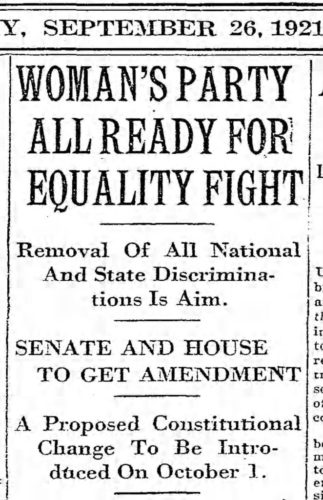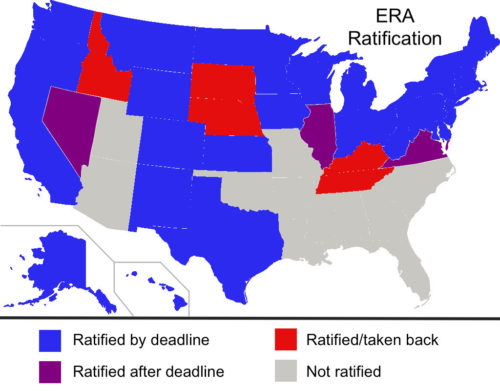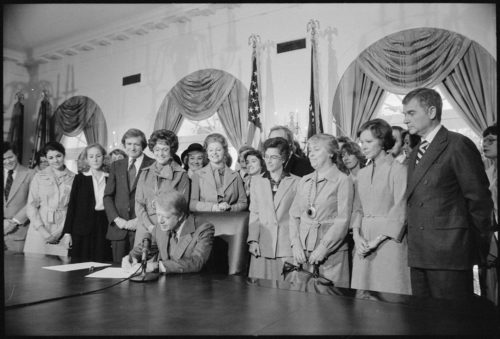Richmond, Virginia —(Map)
Last Wednesday, Virginia became the 38th state to approve the Equal Rights Amendment. This approval raises the possibility that a rule protecting the rights of men and women equally will become part of US law.
The Equal Rights Amendment (ERA) is a change that was first suggested for the United States’ Constitution in 1921. It says that equal rights can’t be denied to someone because of their sex.

(Source: Arthur Sears Henning [Public domain], via Wikimedia Commons.)
Though the ERA was passed by Congress in 1972, the amendment has had a long and rocky road. The recent vote in Virginia may not change that.
The US Constitution lays out the basic rules of the country. Because these rules are important, it’s not easy to change them. Changes to the Constitution are called “amendments”. Once an amendment is passed, it becomes a part of the Constitution. Only another amendment can remove or change it.

(Source: Leffler, Warren K. [Public domain], via Wikimedia Commons.)
Though nearly 12,000 amendments have been brought up in Congress since 1789, only 27 have become part of US law. The first 10 of these amendments are known as the “Bill of Rights”.
The first step in changing the Constitution is for the US Congress to agree to the amendment.
Even after Congress passes amendments, they don’t become law until at least three-fourths of U.S. state legislatures (state lawmaking groups, like Congress) agree that it should become a law. Since there are 50 states, that means that 38 states need to ratify (approve) the amendment. That has been the problem for the ERA.

(Source: Based on work by Bhbuehler [CC BY-SA], via Wikimedia Commons.)
Most amendments come with a deadline. For the ERA, this was 1979 – seven years after Congress approved it. Before the deadline passed, the ERA had only been ratified by 35 states. In 1978, the deadline was extended to 1982.

(Source: The U.S. National Archives [No restrictions], via Wikimedia Commons.)
But many people had begun to oppose the ERA. Some people said the 14th Amendment already promised equality, so the ERA wasn’t needed.
Phyllis Schlafly probably worked the hardest against the ERA. She was in favor of women being wives and mothers. Ms. Schlafly argued that the amendment would take away rules that protected women. She said the ERA could mean that women might be forced to join the army.

(Source: Warren K. Leffler [Public domain], via Wikimedia Commons.)
When the 1982 deadline passed, there were still only 35 ratifying states. Many other states had come close to ratifying it, but failed. Five states even said they took back their ratification, though it’s not clear if this is possible. Still, most people thought the ERA was dead.
But recently, there’s been new interest in passing the ERA. Since 2017, three new states have ratified the amendment – Nevada, Illinois, and now Virginia. That brings the number of ratifying states to 38 – the magic number.

(Source: Jimmy O’Keefe VCU Capital News Service, via Flickr.com.)
Supporters of the ERA say that now Congress can just set a new deadline and the amendment will become law.
The US Department of Justice, which is in charge of making sure the rules of the country are followed, disagrees. The Justice Department says Congress can’t change the deadline after it has passed.
The question is likely to be decided in court.
😕
This map has not been loaded because of your cookie choices. To view the content, you can accept 'Non-necessary' cookies.
